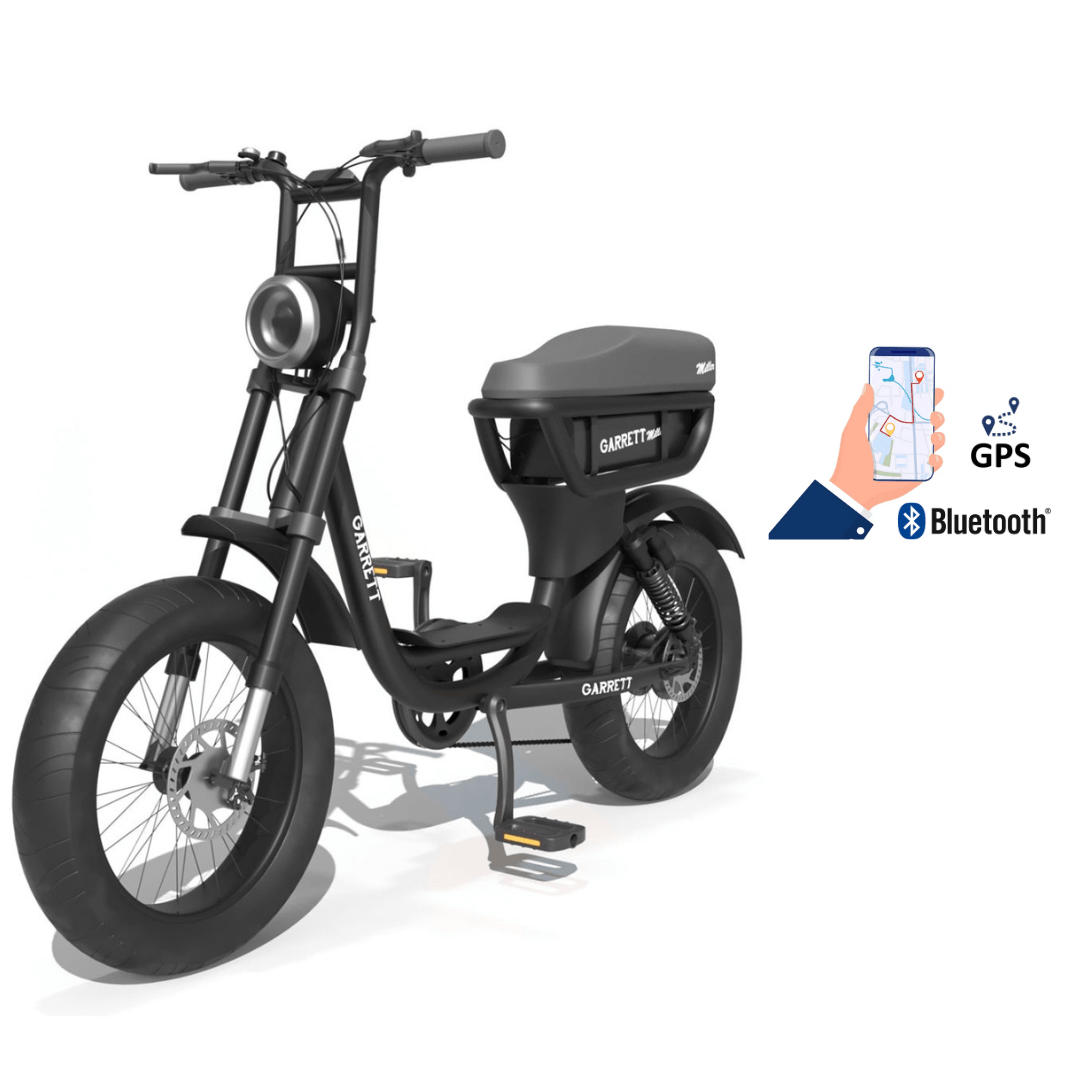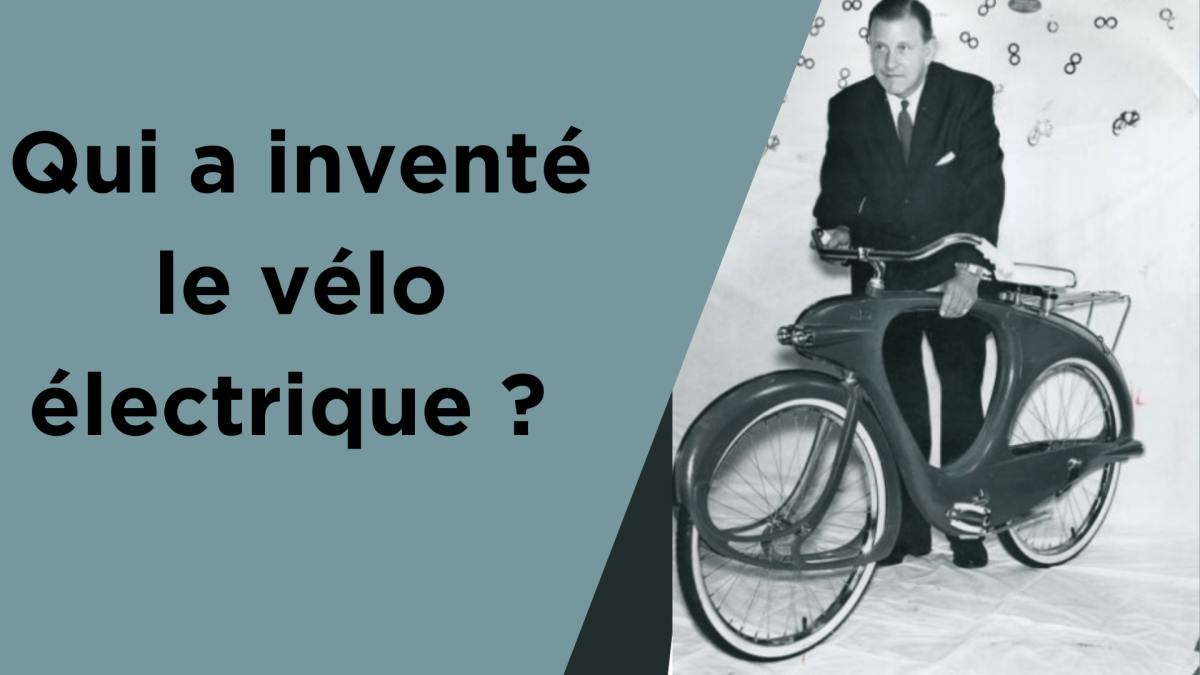The electric bike is the new star of urban mobility. More eco-friendly, more practical, more fun, it has managed to win us over. But who came up with the idea of inventing the electric bike and for what purpose? Behind its current success lies a story rich in innovations and technical challenges. To discover it, we must go back to the end of the 19th century. Weebot tells you the beginnings of the electric bike up to its evolution in the modern era. Let's go!
The first prototypes of the electric bike
Before becoming the high-performance and versatile vehicle we know today, the electric bike was originally something "experimental" from the late 19th century. During this period, several inventors focused on the subject and attempted to combine electric propulsion and bicycles to facilitate the daily movement of the population. From these experiments, the first prototypes were born.

The patent of Ogden Bolton Jr. in 1895
The fascinating history of the electric bicycle officially began in 1895 with the patent filed by Odgen Bolton Jr. in the United States. His invention was a true revolution for the time. He installed a 6-pole electric motor on a bicycle integrated into the rear wheel, powered by a 10V battery placed on the frame. Similar to a balance bike, this model was devoid of pedals and relied solely on electric power to move forward.
The first obstacles
Despite this great technological innovation, Odgen Bolton Jr.'s bicycle did not convince the general public. Unfortunately, many technical obstacles will arise on its path and hinder its large-scale commercialization. The main issues concerned, in particular, the significant weight of the battery and the low range of the device. Nevertheless, this prototype laid the groundwork for future innovations in the field of electric bicycles.
The innovation of Hosea W. Libbey in 1897
Two years after Odgen Bolton Jr's patent, Hosea W. Libbey filed a patent in 1897 for a new model of electric bicycle. Named "Lampociclo," his machine is based on the integration of two electric motors installed at the level of the crankset. He believed that this could improve the balance and efficiency of the propulsion system. And he was not wrong!
Its model could reach an impressive speed of about 32 km/h; a true feat for the time! Unfortunately, the limitations of the batteries and motors of the era made its daily use impossible. Despite its incredible potential, the "Lampociclo" failed to establish itself in the market. However, it can boast of having inspired many modern designs.
Electric bicycle: Developments in the 20th century
Starting from the 20th century, the evolution of the electric bicycle will take a very interesting turn. It was marked by major technological advancements, but also by a certain period of neglect. Technical challenges notably hindered its development, until new energy and ecological issues brought it back to the forefront. Let's explore all of this in more depth!

The technological challenges
During the first half of the 20th century, the electric bicycle experienced a period of "stagnation." Inventors lacked the inspiration to make it something practical for everyday life. The batteries available at the time were heavy and underperforming, thus removing all the practicality of the traditional bicycle. Moreover, the competition from cars and electric motorcycles pushed electric bicycles to the background, without the chance to shine.
Manufacturers also had to face another issue: the integration of electrical components within the bicycle. It was difficult for them to find a solution that would make the electrical components both functional and protected from external dangers.
The renewal in the 1970s
Later, with the oil shock of the 1970s and the rise of ecological concerns, interest in electric bikes surged again. New prototypes emerged, particularly thanks to the introduction of Nickel-Cadmium (NiCd) batteries that were more efficient.

Then, around the 1990s, electric bicycles began to become popular with the advent of Nickel-Metal Hydride (NiMH) batteries and improvements in electric motors. Giants like Yamaha and Panasonic took an interest in the market and started to market the first models accessible to the general public.
Jean-Joseph Etienne Lenoir: A French Pioneer
Long before the rise of the modern electric bicycle, a French engineer, Jean-Joseph Etienne Lenoir, had already laid the foundations for electric propulsion. As early as the 19th century, he developed electric motors, thus paving the way for future applications in the field of mobility. Although his work is more closely associated with the automobile, his research indirectly influenced the evolution of the electric bicycle.
Garrett Miller: An American Pioneer at the Heart of Innovation
Garrett Miller deserves to be mentioned for his influence in the evolution of the electric bike. He was one of the first to systematically explore the integration of electric motor technology into bicycles.
His passion for innovation and his commitment to the development of sustainable mobility solutions have contributed to advancing electric motor technologies and battery management, key elements in the success of modern electric bikes. Although he is not as high-profile as others, his work in the 1990s was fundamental to the rise of this industry.



The European Pioneers of Electric Bicycles
If the first prototypes of electric bicycles are often attributed to American inventors, Europe has also played a key role in the evolution of this innovative mode of transport. Several European engineers and companies have contributed to the development of more efficient models, thus facilitating the adoption of electric bicycles in the daily lives of city dwellers.
Moustache Bikes: A pioneering French brand
In France, Moustache Bikes is one of the most iconic companies in the world of electric bicycles. Founded in 2011, it quickly attracted fans of soft mobility with its elegant and high-performance models. Their bikes, like the "Moustache Friday", are now essentials in the market, offering both comfort and innovation. With a refined design and cutting-edge technology, Moustache has managed to democratize the use of electric bicycles in France, especially in large cities.
Bosch: The technological ally of electric bikes
On the German side, Bosch has been a key player in the rise of electric bicycles. The brand is particularly known for its high-performance motors and batteries, used by many European brands. Their pedal-assist technology is now one of the most reliable and powerful on the market. Bosch has thus contributed to making electric bicycles more accessible and efficient, facilitating their adoption by an increasingly broad audience.

Bikemind: Swiss innovation at the service of performance
Switzerland is not to be outdone with the company Bikemind, which has managed to innovate in the field of compact electric motors. Thanks to their expertise, they have been able to design lightweight electric bikes that are particularly suited to the needs of urban cyclists. Their technology has made electric bikes more efficient without compromising their weight, an essential factor for daily commuting.
The rise of modern electric bicycles
The rise of modern electric bicycles is based on major technological innovations such as the miniaturization of components, the improvement of batteries, and the democratization of its use among the population. These various factors have allowed this market to transform into what we know today.
The innovations of the 1990s
In the 1990s, the electric bicycle sector faced a turning point in its history. In 1993, Yamaha decided to market its first mass-market model named "Yamaha PAS." It stands out for its electric pedal assistance, a technology that offers a smoother and more natural ride, attracting a whole new profile of user.

At the same time, batteries continue to evolve with the introduction of Lithium-Ion in the 2000s. Lighter and more efficient, they offer better range and significantly accelerate the development of electric bikes.
Recent technological advancements
"Today, the electric bike market is still experiencing significant growth. Technological advancements are consistently present, with much more powerful motors and more efficient batteries than those of the 1990s."
But what really makes the difference with modern electric bikes are the high-tech and connected features, such as LCD screens and Bluetooth connectivity with mobile apps that allow real-time tracking of battery level and bike performance.
And to encourage their adoption, the State, as well as many cities in France, offer subsidies that reduce the cost of purchasing an electric bike. We will discuss this in the following lines.
The challenges of accessibility and the cost of electric bikes
Initially, the price of electric bikes was a major barrier. In the 1990s and 2000s, these bikes cost between €1,500 and €3,000 due to the high cost of batteries and motors. The first NiCd batteries were heavy and expensive, making these bikes inaccessible for many.

Decrease in battery costs: a decisive turning point
The real turning point came with the arrival of lithium-ion batteries, which are lighter, more efficient, and above all, cheaper. In 2010, a lithium-ion battery still cost €1,000 per kWh, but by 2020, this price had dropped to €100 per kWh, a decrease of 90%. This evolution has helped reduce the cost of electric bikes and make them accessible to a larger population.
Price of electric bikes today
"Today, it is possible to find entry-level electric bikes starting from €600 to €700, while higher-performance models range between €1,000 and €2,000. High-end models can exceed €4,000."
Government assistance to facilitate access
Many governments, such as in France and Germany, offer financial assistance for the purchase of electric bicycles, thereby reducing the cost for consumers. In France, a grant can go up to €200, making it easier to adopt this eco-friendly mode of transport.
Market growth: a promising future
The drop in prices has significantly contributed to market growth. In 2019, over 2 million electric bikes were sold in Europe, and this trend continues to grow. By 2027, annual sales are expected to reach 7.5 million, confirming the massive adoption of electric bikes as a sustainable mobility alternative.
FAQ
Is today's electric bike inspired by the early models?
Yes, the first prototypes laid the groundwork for modern electric bikes. Although the early versions were rudimentary, they introduced fundamental concepts that have been refined over the decades, such as the integration of an electric motor and a battery onto a bike frame. Today, technological advancements in motors, batteries, and connectivity make electric bikes much more efficient and accessible.
Are today's electric bikes safer for families?
Yes, modern electric bikes are safer, thanks to improved technologies such as disc brakes, driving assistance systems, and better batteries. They are designed with stable frames and wide tires for more comfort and safety. Some models are specifically adapted to carry children.
So, who is the true inventor of the electric bike?
The first inventor of the electric bicycle is Ogden Bolton Jr., who filed a patent in 1895 for a model equipped with an electric motor integrated into the rear wheel. Although his invention did not achieve immediate success, it laid the groundwork for the modern electric bicycle. Other inventors, such as Hosea W. Libbey, also contributed to its development over the years.
Conclusion
Since its invention in 1895 by Odgen Bolton Jr., to its development in the modern era, the electric bike has undergone a true revolution. Despite a difficult start, it has managed to be reborn over the decades and establish itself in the soft mobility market thanks to fascinating technological advancements.
Today, the electric bike is becoming an essential means of transport in all major cities in Europe and Asia. It is a reliable and efficient transport solution, with a bright and promising future thanks to constant innovations in batteries and electric motors.
If you want to join the movement, why not buy your electric bike from Weebot? We have a very rich catalog in which you will surely find your happiness.

